What’s In Your Blindspot?
Over the past few weeks, I’ve been talking with a lot of people.
The good news is people are connecting with my work, and the conversations are positive.
However, I see a common theme. See if you can spot it in this typical conversation:
“So what do you do?”
Me: “I teach and coach technology people soft skills – the things that make them much more effective.”
“Ohhh, that’s awesome! That’s so needed.”
Me: “That’s my experience too- I’ve seen so many people hold themselves back by not developing the key things that could give them a big career boost.”
“How do you teach it?”
Me: “I have an online course, I do 1-1 coaching, and I do workshops with teams. I translate ways to learn these skills through logical steps and as formulaic as possible – so it connects to the technical mind.”
“Ohhh, I can think of 5 people that can use this today!”
But here’s the thing: they see that others need it, but not themselves.
It’s easy to see what you think others “need”; It’s much more challenging to see your blind spots.
We see what others need quickly – and at the same time, struggle to see what is holding our career back.
Here’s the truth: you can always improve your communication. You can continuously improve your self-awareness. You can incrementally adjust your self-management skills. There are no ceilings on these skills. You’re never “there.”
How do you find out what is in your blind spot? Ask others for direct feedback and be open to what they say.
Everyone has blind spots. The more you figure out what is lurking in them (and take steps to minimize their impact), the more effective you’ll be.
Happy Searching!
Ken
P.S. If you want to go deeper on this subject, check out the concept of the Johari Window.
